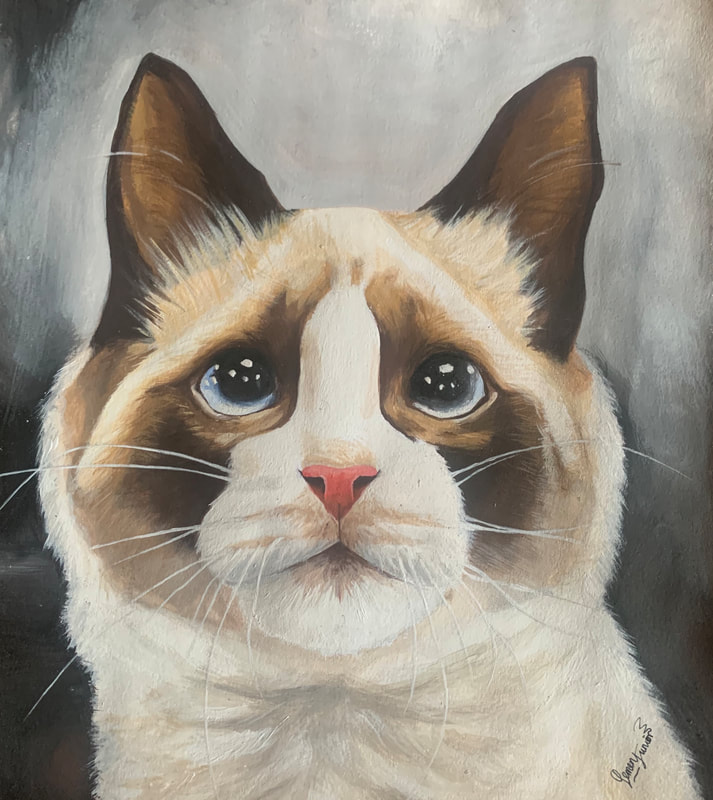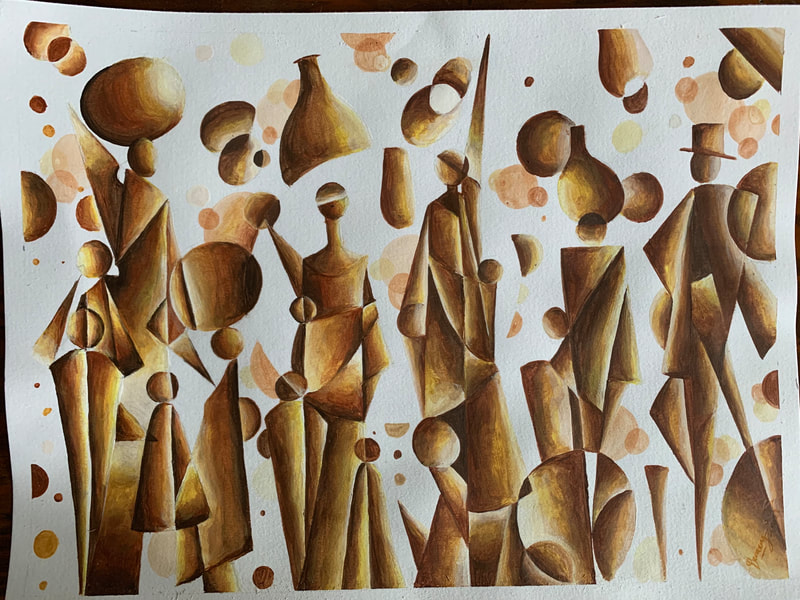|
By Anya Shukla Even though Clement Kammwamba is currently stuck in the United States, unable to return to his home country, Malawi, due to COVID-19 travel restrictions, he’s taking the time to improve his art. Kammwamba hopes to move away from drawing animals—such as the impeccably-detailed, hyper-realistic lions, tigers, and cheetahs that grace his Instagram page—and explore portraiture. "We’ll see how that goes,” he said, bashful. “I’m still in the process of improving my skills.” He’s selling himself short. Kammwamba first discovered acrylic paints around age six or seven, and he steadfastly honed his craft and style over the next decade. His high school, the Jacanda School, lacked art classes or official art teachers; nevertheless, Kammwamba taught himself visual art, motivated by, in his words, “the beauty of seeing what you’re imagining and putting it on paper.” In 2017, Kammwamba was selected for a scholarship to a summer arts program run by the Otis School of Art and Design. As a member of the fashion design track, he delved into clothing and garment design; his efforts culminated in a runway-ready showcase piece: an elegant, asymmetrical dress in red and gold. The perception of art at Otis, Kammwamba noted, “was so different from what my community thinks of art or what other people in Malawi think of art.” Growing up, he wanted to pursue art, but others saw his passion as simply a hobby. After Otis, he said, “I realized it could be something big. It could be a career.” Inspired, Kammwamba now wants to pursue a job in fashion design. He creates sketches of dresses and dreams of creating a line blending traditional Malawi clothing with Western fashion. To that end, Kammwamba finds value in environments with cross-cultural interaction. “I see a lot of artists in Malawi who create ‘African art,’” he said, characterizing “African art” as brightly colored pictures of sunsets and women. “That’s something unique and something people should be doing... but they don’t look at other types of art.” Oftentimes, he sees Malawian artists simply recreating the art they see around them. “We should always try to explore more,” he noted. Yet that exploration shouldn’t lead to imitation. Kammwamba is sometimes frustrated by the Malawi fashion scene, where “a lot of people are just copying things that are from the United States or around the world.” Instead, he wants to incorporate his country’s culture into his creations. As well, Kammwamba isn’t just an artist in the conventional sense. He also promotes arts education. In 2018, he participated in a year of service with the Jacanda School, during which he taught art classes. There, he shared the artistic techniques he had learned at Otis, such as still life drawing. He also led students in creating murals to raise awareness for climate change and road safety. During that year, Kammwamba admits, he learned that “I have more fun when I’m teaching than when I’m doing art.” He foresees channeling his talents by creating a youth education center in Chigumula, Malawi, where students can learn more about entrepreneurship and art. To that end, Kammwamba believes the arts are incredibly impactful for youth: “Say... Disney. They make movies and animations; kids start watching them at a very young age.” If Disney promotes equity in the arts... or on the flip side, if the company doesn’t, what kids see on screen will influence their worldview. Although Kammwamba may currently be unable to return to Malawi, when he does reach his home country, he hopes to instill a passion for art in his community, just as others did for him. “As I grew up,” he said, “I really realized the importance of art: how you can use it to inspire people and teach people.” Any artistic organization that educates youth, not just Disney, has a duty to showcase diversity. Kammwamba is willing to help take on that responsibility. Images courtesy of Clement Kammwamba.
0 Comments
Your comment will be posted after it is approved.
Leave a Reply. |
Archives
February 2023
Categories
All
|




 RSS Feed
RSS Feed